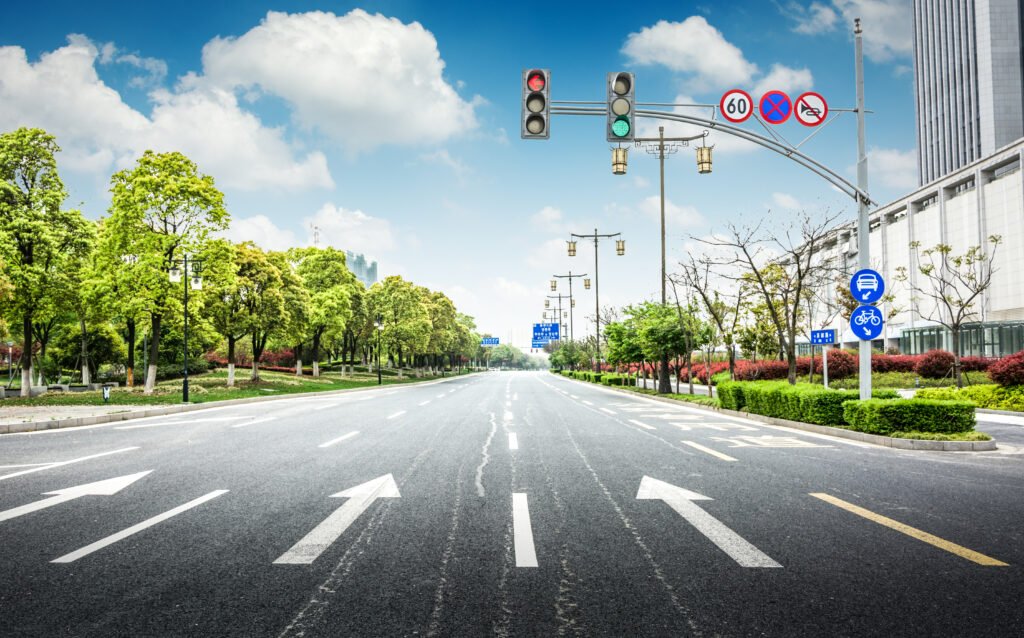
India’s road safety landscape has been a cause for concern for decades, with a high rate of accidents and fatalities. However, advancements in technology offer a glimmer of hope to address this pressing issue. In this blog post, we will explore how advanced technology can transform the future of road safety in India.
1. Smart Traffic Management:
- AI-Powered Traffic Management: Utilizing artificial intelligence (AI) and machine learning algorithms to monitor and manage traffic flow. Smart traffic lights that adapt to real-time traffic conditions can reduce congestion and accidents.
- Dynamic Signage: Implementing electronic variable message signs that can display real-time information on road conditions, weather, and accidents, helping drivers make informed decisions.
2. Vehicle Safety Technologies:
- Advanced Driver Assistance Systems (ADAS): Encouraging the adoption of vehicles equipped with ADAS features like lane-keeping assist, adaptive cruise control, and automatic emergency braking.
- Connected Vehicles: Promoting the use of connected vehicle technology that allows real-time communication between vehicles and infrastructure, enabling features like collision avoidance and traffic signal prioritization.
3. Digital Licensing and Registration:
- Digital Driver’s Licenses: Replacing physical driver’s licenses with digital versions on smartphones. These digital IDs can be quickly verified by law enforcement and reduce the risk of forged documents.
- Blockchain-Based Vehicle Registration: Using blockchain technology for secure and tamper-proof vehicle registration records, which can help combat vehicle theft and fraud.
4. Road Surveillance and Enforcement:
- CCTV Cameras and ANPR: Expanding the network of CCTV cameras with Automatic Number Plate Recognition (ANPR) capabilities to monitor traffic violations and identify stolen vehicles.
- Drones for Traffic Monitoring: Utilizing drones to monitor traffic and road conditions, especially in areas that are hard to reach by ground vehicles.
5. Data-Driven Decision-Making:
- Big Data Analytics: Analyzing traffic data to identify accident-prone areas, traffic hotspots, and high-risk behaviors, allowing authorities to take proactive measures.
- Predictive Analytics: Using predictive modeling to anticipate and prevent accidents by factoring in variables like weather, traffic patterns, and driver behavior.
6. Educational Initiatives:
- Virtual Reality (VR) Simulators: Using VR technology to create realistic driving scenarios for driver training and awareness programs.
- Mobile Apps for Road Safety: Developing apps that provide real-time updates on traffic conditions, safe routes, and driving tips.
7. Emergency Response Systems:
- Integrated SOS Services: Implementing integrated emergency response systems that can pinpoint the location of an accident and dispatch the nearest first responders quickly.
- Connected Ambulances: Equipping ambulances with real-time communication and navigation systems to reach accident scenes faster.

empty asphalt road through modern city in China.
Conclusion:
The future of road safety in India relies on harnessing the power of advanced technology. By adopting smart traffic management, vehicle safety technologies, digital solutions, data-driven decision-making, educational initiatives, and improved emergency response systems, India can significantly reduce road accidents and save countless
lives. As technology continues to evolve, the country has the opportunity to create safer and more efficient roadways for everyone.
 TrafficInfraTech Magazine Linking People Places & Progress
TrafficInfraTech Magazine Linking People Places & Progress